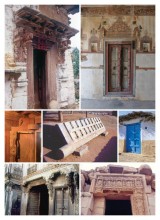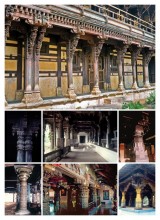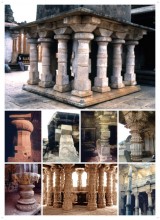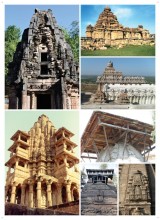Architectural Elements and Materials
Brick (mud), wood and stone have been the essential materials of construction since the genesis of shelter. Grass, hay, palm leaves, twigs and such have been used in the most primitive architectures and in tandem with the essential ones mentioned above. Thus carpentry and masonry emerged as the prime trades of construction activity. Consequently the support systems, floor systems and the roof systems developed; and therein came up the logic of using materials in the most sensible or efficient manners. The walls,columns, rafters, brackets, capitols, bases and such came up as the elements or the vocabulary of construction.Shikhars, domes, vaults, roofs minarets and such became the components or phrases. A regional syntax gave rise to the built form and the architecture. The elements and the components were elaborated, details were developed and stylistic nuances came up. Architectural types emerged along with the elements and the components that enriched the language and the stories of architecture.








